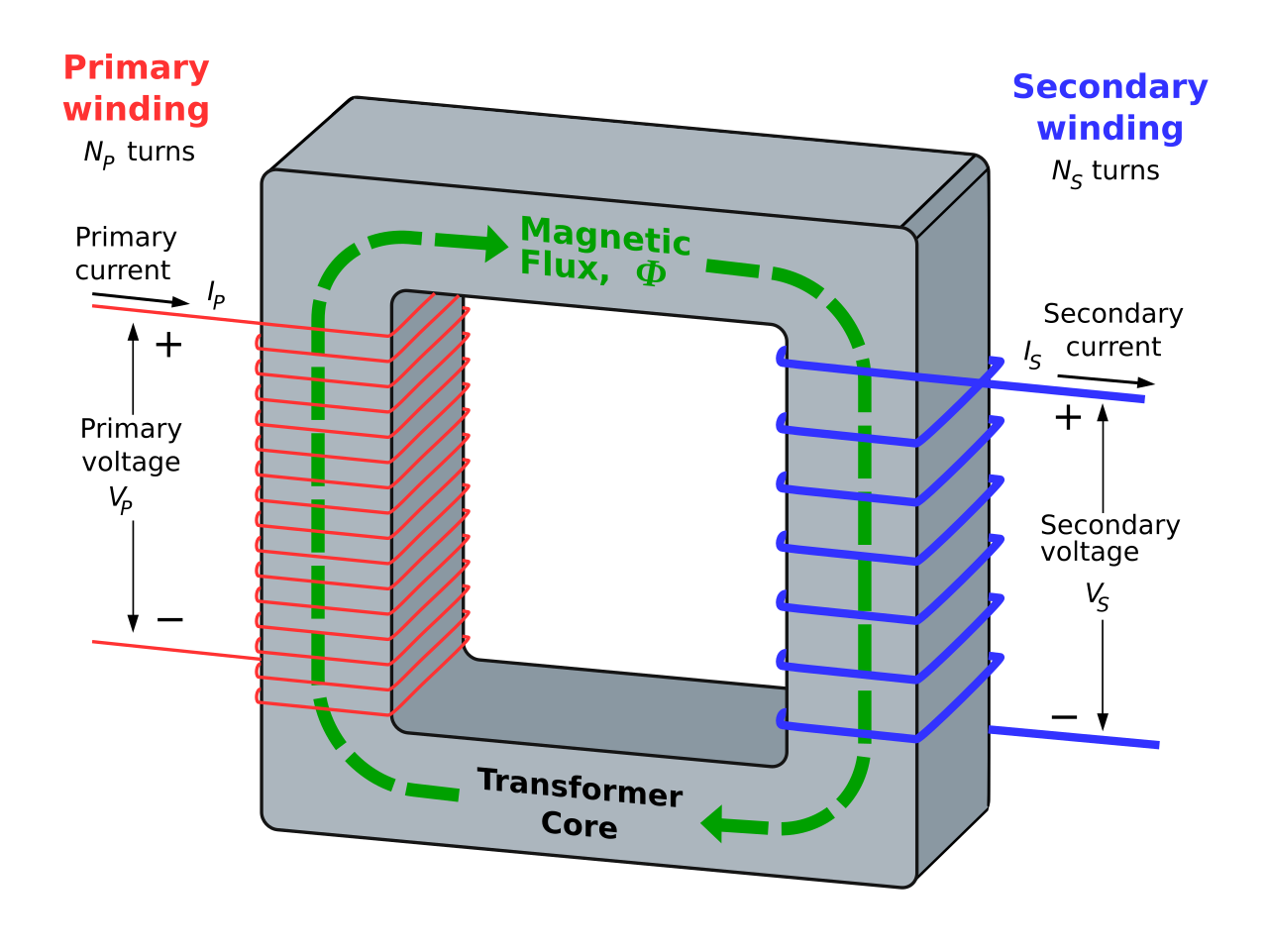Transformer in simplest form is defined as a static device having two Electric circuits which are electrically isolated but magnetically coupled causing transfer of constant power at constant supply frequency from primary circuit to secondary, stepping up/down either Voltage or current.
[image source: Wikipedia]
Now let's take into account a good question which I was asked by a person.
Which of the following transformers will be largest in size? 1kVA, 50Hz or 1kVA, 60Hz or 1kVA, 100Hz or 1kVA, 500Hz and Why?
It's indeed a good question. You see that power rating of each of the above mentioned transformer is same but operating frequency is different. Had we given different power ratings, it would have been easy to answer that one with higher power rating is larger in size compared to the smaller one. But here, we have to compare in terms of operating frequency. Does frequency affects size of transformer?...Well it does.
The answer is for a given kVA rating, with increasing frequency, the size of a transformer decreases.
Explanation:-
Without going much in theory, I would like to show you the equation of induced emf in a transformer which is given as
E=4.44køfN
Where k is some constant (not important in this context), ø is magnetic flux, f denotes frequency and N is no. of turns.
Now, look at the equation. All it says is that induced emf is directly proportional to number of turns having magnetic field flux and frequency constant.
For a given supply, frequency is constant. Now suppose we can vary the frequency using any power electronics technique. So, now the induced emf depends on both frequency and number of turns.
E=k′fN. Where k' is another constant.
It is obvious that for a given rating, a transformer has constant Voltage on both primary and secondary side. Thus, if you increase frequency the number of turns required decreases for a given or required voltage. So, higher the frequency lower the number of turns and hence small the size of transformer.
N=E/k'f i.e, No. of turns inversely proportional to operating frequency where power rating is constant.
We don't need to know the value of other factors like k, ø etc. in emf equation. We know for f=50Hz and N=220 turns, we will be getting 220V. If I double up the frequency to 100Hz, number of turns required will be halved. So, the conclusion is with increasing frequency, number of turns required decreases and hence the size. But in practical sense, this has some limit as increasing frequency increases inductance too and problem like skin effect come into existence.
Hope you enjoyed reading. Comment your views or questions and do share the post.
Thanks.


Comments
Post a Comment